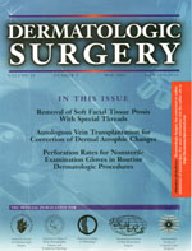
M. A. Sulamanidze, MD, P. F. Fournier, MD, T. G. Paikidze, MD, and G. M. Sulamanidze, MD
Clinic of Plastic and Aesthetic Surgery, TOTALCharm, Moscow, Russia
background. Facial aging leads to loss of structural integrity. objective. To develop a means of supporting ptotic facial tissue without facelifting.
methods. Polypropyline sutures were modified by designing many dents along their lengths. These "APTOS" threads hold tissue firmly because of the sharp edges to the dents. These threads were used to lift facial tissue in 186 patients.
results. APTOS threads proved successful in lifting various ptotic areas of the face, improving facial contour. Improvement persisted in most patients with follow-up of two months to 30 months. In four patient (2.5%) the thread failed.
conclusion. Lifting facial tissues using APTOS threads is simple, constructive, and time-saving. It avoids scars and the need for implants.
М.А. SULAMANIDZH, MD AND G.M. SULAMANIDZE, MD HOLD A PATENT ON THIS DEVICE.
THE PROCESS of aging is known to be a natural biological event taking place in the human body and leading to atrophy of the soft tissues and loss of their tonicity and congenital structural integrity. On the face, this process is manifested in the form of a nonuniform, focal ptosis of the fat tissues located above and lateral to the nasolabial fold, superciliary, buccal, mental, and submental areas. 1-3
Recent studies have shown that the leading role in the degree of involution of the facial soft tissues is played by the so-called superficial musculoapo-neurotic system (SMAS), which in some places is closely connected with both the bone and the skin. It is these portions that are known to support the soft tissue of the adjacent areas (Figure I). 1-5 However, with aging, these connections become weaker, leading to the gradual appearance of the lacrimal grooves, aggravation of the nasolabial folds, followed by worsening of the wrinkles of sorrow. 3,6
These involutional alterations are mainly connected with the process of aging of the integuments, and removing these deformities consisted of uplifting and excision of only the excessive skin. Since 1974, first craniofacial surgeons, then plastic surgeons, began working out and implementing operations to uplift the soft tissues under the SMAS. 4,7 Then the surgeons put forward a postulate on a considerable role of the facial skeleton in the process of aging, and the bravest of them converted to suprapcriosteal, as well as sub-periosteal SMAS uplifting. Such operations were performed with the help of endoscopiс equipment. 1,8,9
Parallel to this, aesthetic medicine has been developing toward less invasive surgery: to rejuvenate the face and neck, specialists began using various types of skin peeling, contour injection plasty of soft tissues with a variety of gels, skin reinforcement with special golden threads, etc. 10,11 However, each of these methods, as well as various combinations have particular shortcomings of their own.
Filling in of wrinkles and folds with any implant results in a pastous and puffy face with unnatural contours, where the center of gravity of the face is visually shifted downward. Using chemical peels makes it possible to obtain skin reduction, better cutaneous structure, and tighten flabby tissues, but without attaining uplifting or a new contour.
Our study was aimed at improving the cosmetic outcome of surgical treatment of patients suffering from facial soft tissue ptosis using a new specially designed suturing material that simplifies the surgical procedure and decreases the severity and duration of the rehabilitation period.
We implemented a method of uplifting, or carcass sewing, of the flabby soft tissues of the aging face with a special suturing material for stable fixation of the soft tissues in a new, more aesthetically advantageous position. This manipulation was carried out with the help of a new suturing material we devised and called "APTOS"—[antiptosis (RF patent no. 2139734, International Priority PST/RU 99/ 00263, July 29, 1999)]. The APTOS threads are made of 2-0 polypropylene line with dents provided during the manufacturing process, thus creating slant edges with sharp ends (Figure 2). These dents provide one-way travel of the thread in the soft tissues. After the thread is inserted under the skin, the dents prevent the thread from moving in the opposite direction, thus providing uniform gathering of the soft tissues, uplifting them and creating a new volumetric contour.
In order to fix the uplifted tissues in the required position, convergent cogs inside the tissues provide support and fixation of the newly created contour (Figure 3). An even better effect is achieved by using the threads with alternating angles of the cogs (Figure 4). The threads are inserted into the subcutaneous fat with the help of a guide, a long injection needle.
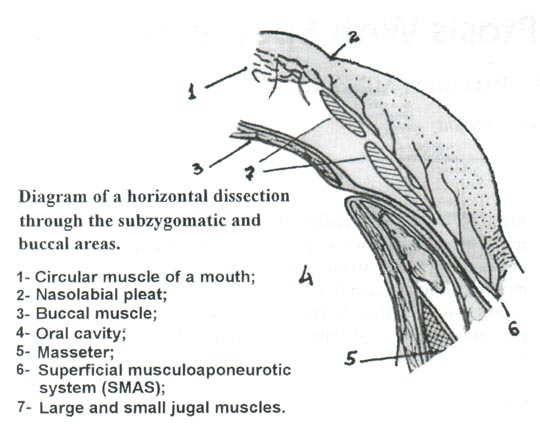
Figure 1. Points of fixation of the facial soft tissues to the bone structures.
In the overwhelming majority of cases, infiltration anesthesia is used—a 1 % lidocaine solution. The guiding needle is used to punch the skin, then is subcutaneously passed along the preliminarily marked contour, at the required depth, and brought out in the place needed.
The depth of conducting the needle in various places should be different. For instance, in order to uplift the eyebrow's tail, it is expedient to conduct the needle in the following manner: in the projection of the needle's passage under the pelage—intradermally, then in the area of the temple and eyebrow—touching the skin. To uplift the buccozygo-matic area, the needle is inserted along the contour, gradually deepening into the subcutaneous fat (but not more than 1.0-2.0 cm, depending upon the thickness of the skin and fat), to be followed by gradual elevation to the skin surface.In the mental and submental areas, the depth of the needle's insertion also varies depending on the thickness of the skin, fat, and the degree of the involutional alterations.
After the needle is brought out to the surface, the thread is inserted throughout its orifice, manually pulling the soft tissues into the required, uplifted position, then the needle is removed, with the thread remaining. Thus the gradually shifted and grouped tissues within the zone of the thread remain fixed in the new position, with each dent clinging to and supporting a particular portion of the soft tissues. Thereafter the thread's ends are cut and pushed under the skin.

Figure 2. The longitudinal section of the APTOS thread with a one-way direction of the cogs.

Figure 3. The longitudinal section of the APTOS thread with a two-way direction of the cogs (converging).
To uplift separate portions of the ptosed tissues, we have developed a special marking (Figure 5). For example, lifting the buccozygomatic areas requires three threads to be passed under the skin from both sides: one long (8.5 cm) and two short threads (5 cm), with the long one passed sufficiently deep within the fat tissue like a bow string, which when stretched provides the effect of uplifting the flabby buccal tissues, and a round contour of the skin. The short thread, passed parallel to the long one, is needed to maintain the effect created by the long thread and to provide a more convex contour to the skin in this area. The second short thread is passed subcutaneously along a steep arch from the zygomatic area toward the cheek and makes it possible to replace the overhangs above the nasolabial fold not only upward, but laterally toward the cheekbones, thus removing the lachrymal groove.
In order to lift mental overhangs, we implant two long threads on each side parallel to the skin, not touching it from the inside, at a depth of 1-2 mm in the subcutaneous fat (Figure 5). Similarly, two APTOS threads (8.5 mm long) are passed in the submental area (Figure 5). This manipulation produces improvement of the contour of the soft tissues of the subzygomatic areas. Depending on the individual peculiarities, other variants on implanting the threads are possible.
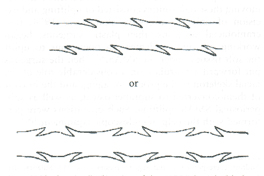
Figure 4. The longitudinal section of the APTOS thread with the alternating-direction cogs.
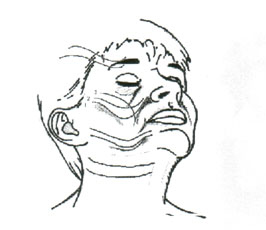
Figure 5. Marking in lifting of the soft tissues of the face and neck with the APTOS threads.
The routing operation is easy and quick to perform, accompanied by little injury to the tissues, with the intervention's outcome manifesting itself as early as on the operating table. There is a short rehabilitation period, and if the patient complies with elementary recommendations (abstaining from abrupt mimicking and chewing movements, excluding facial massage for 2-3 weeks), the outcome will remain for a considerable length of time.
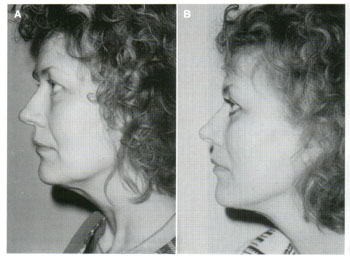
Figure 6. A) Before and B) 2 weeks after lifting of the face and neck.
From May 1999 to May 2001, the described technique was used in 341 patients; however, this article deals with analyzing the outcomes in only 186 patients, ages 21-77 years (Figures 6-8). The overwhelming majority of these cases were women (92%). Of these, 133 patients underwent the procedure as an independent intervention and 53 underwent the procedure in combination with other operations and procedures. For example, the lower classic blepharo-plasty by means of two short threads APTOS inserted through the wound according to a definite scheme makes it possible to effectively carry out the so-called suborbicularis oculi fat (SOOF) lift; correction of the manifested nasolabial folds together with uplifting of the buccozygomatic areas is accompanied by underresecting the cutaneous fatty layer along the fold's contour by means of a wire scalpel without external cuts, 11 while in the upper blepharoplasty it is rather easy to perform cantopexy.

Figure 7. A) Before and B) 4 months after uplifting of the buccozygomatic areas and blepharoplasty and liposuction of the mental and submental areas.
The indications for correction of contours of the face and neck with the APTOS threads were ptosis of the soft tissues of the face and neck, a flabby, flat face, and insufficiently manifested aesthetic contours.
Results and Discussion
Most often the method was used to remove ptosis of the buccozygomatic areas, which is related to the fact that it is these involutional alterations that patients mainly worry about. Besides, the effect of the operation in these areas manifests itself immediately after the intervention, and is especially expressive, as well as lasts for a long time. More often performed was uplifting of two or several facial regions, although uplifting of the whole face was not uncommon.
The immediate postoperative period up to 14 days was uneventful in the majority of the patients. In only 4 cases (2.5%) did we observe thread disruption due to unilateral weakening of the edges and threads emerging to the cutaneous surface, thus requiring removal and a secondary implantation. We did not consider as complications the cases of hypercorrcction (9.5%), linear hemorrhages along the passage of the thread (9.5%), skin indraught in the entrances and exits (14.6%), because all of these are easily corrected either spontaneously or manually. No other complications or allergic reactions were noted.
Both the immediate and later results were good and persistent (follow-up of 2 months-2.5 years), though in some patients (12 cases) unilateral or bilateral implantation of additional threads was required.
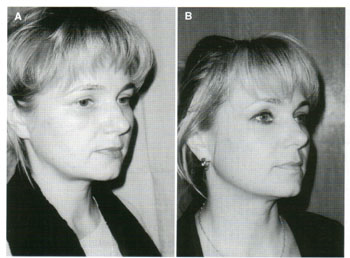
Figure 8. A) Before and B) 9 months after uplifting of the entire face.
Two cases required carrying out rhytidoplasty: 1 year and 1.5 years after implantation of the APTOS threads. In both cases, the patients were satisfied with the outcomes, but as the time passed by they wished to have a more radical effect. However, it gave us the opportunity to study the threads and tissues around them both intraoperatively and histologically. Intra-operatively we noted that the implanted threads were situated in the places where they had been installed, with neither color nor structure being altered, and to remove them required applying considerable effort because of the strong cicatricial structure observed around them. The histologie study, which we performed later, showed that the APTOS threads were covered with a fibrous shell that was most pronounced around the edges (Figure 9).
The method of lifting tissues of the face and neck using the APTOS threads is a simple, conservative, time saving, and sparing procedure leaving no visible traces of intervention on the skin. It is efficient for correction of the jawline and for lifting the flabby ptosed tissues in involutional facial alterations. Our experience has proved that this technique may be an alternative to the classic methods of lifting and contour plasty of the jawline with various implants.
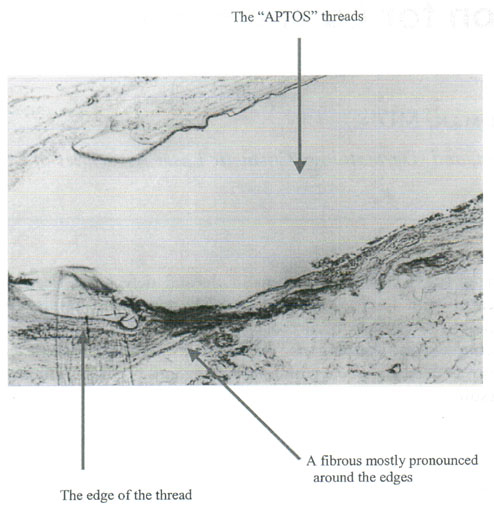
Figure 9. Histologie preparation: dissection through the fat along the projection of the length of the APTOS thread. The duration of implantation: 1 year.
1.Kazinnikova OG, Adamian AA. Age-specific changes in facial and cervical tissues: a review. Ann Plast Recontr Aestheticurg 2000;1: 52-61.
2.Mitz V, Peironye M. The superficial rausculo-aponeurotic system in the parotid and cheek area. Plast Reconstr Surg 1976;58:80.
3.Owsley JQ. Lifting the malar fat pad correction of prominent nasolabial folds. Plast Reconstr Surg 1993;91:463-74.
4.Freeman MS. Transconjunctival sub-orbicularis oculi fat (SOOF) pad lift blepharoplasty. Arch Facial Plast Surg 2000;2:52-64.
5.Fournier PF. Join the leaders in beauty surgery discussing the latest lectures and concepts. World Congress on Aesthetic and Restorative Surgery, February fO-12, 200Î, Mumbai, India.
6.Sulamanidze MA, et al. Flabby, ageing face. A new approach. World Congress on Aesthetic and Restorative Surgery, February 2001, Mumbai, India.
7.Skoog T. Plastic surgery. New methods and refinements. Stockholm: Almquist & Wiksell, 1974:301-3.
8.De la Plaza R, Arroyo JM. A new technique for the treatment of palpebral bags. Plast Reconstr Surg 1988;81:677-85.
9.Hamra ST. The zygoorbicular dissection in composite rhytidectomy: an ideal midface plane. Plast Reconstr Surg 1998;102:1646-57.
10.Adamyan AA, et al. Clinical aspects of facial skin reinforcement with special (gold) surgical filaments. Ann Plast Reconstr Aesthetic Surg 1998;3:18-22.
11.Sulamanidze MA, et al. Wire scalpel for surgical correction of soft tissue contour defects by subcutaneous dissection. Dermatol Surg 2000;26:146-51.
За каждым из методов Aptos – годы клинических исследований, анализ отсроченных результатов. Техники и схемы установки нитей имеют четкое научное обоснование: компания-разработчик постоянно проводит научные изыскания, результаты которых лежат в основе всех ее продуктов. Результаты этих исследований представлены публикациями в ведущих научных изданиях.
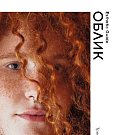
Ранняя реабилитация после нитевого лифтинга. И. Сазонова, А. Прилучная, В. Зурабов, Д. Абидов
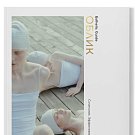
Нитевая комбинаторика. А. Прилучная, Е. Проскурнина, И. Гуляев, Р. Бессонов